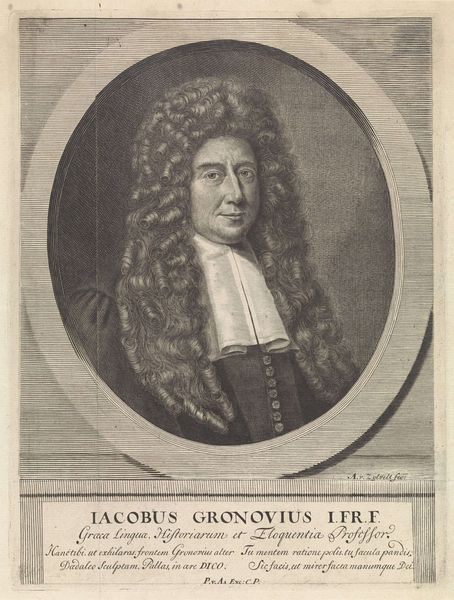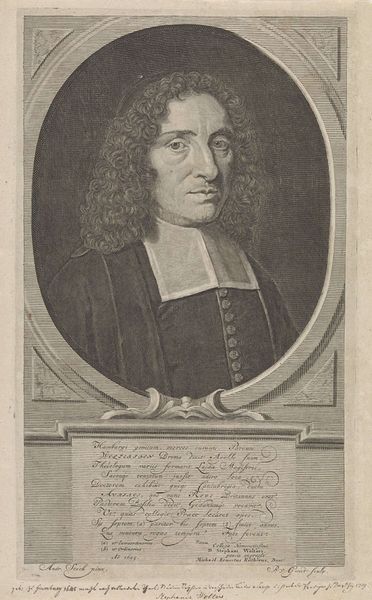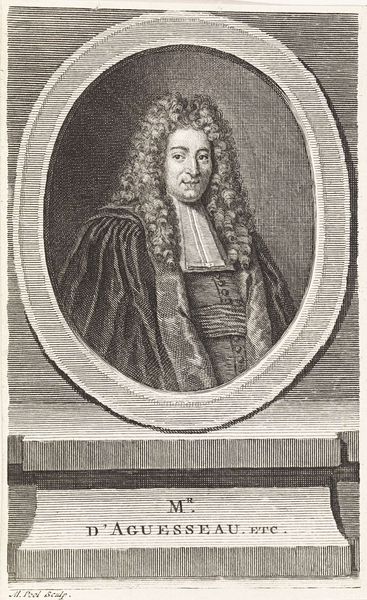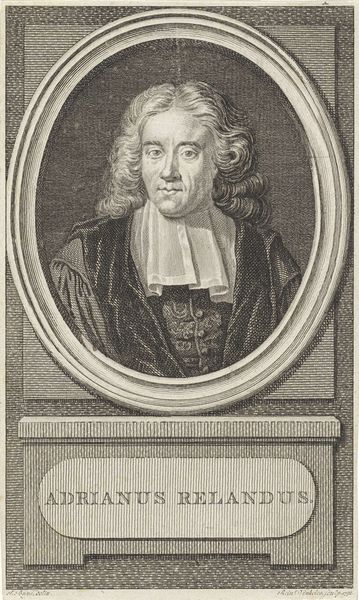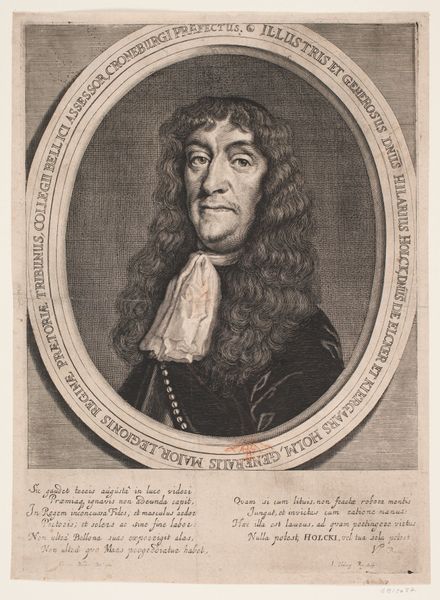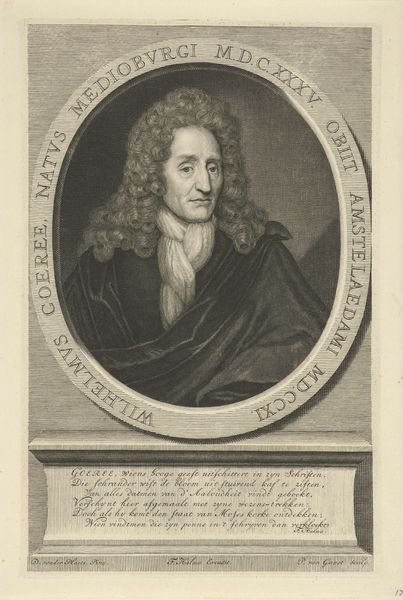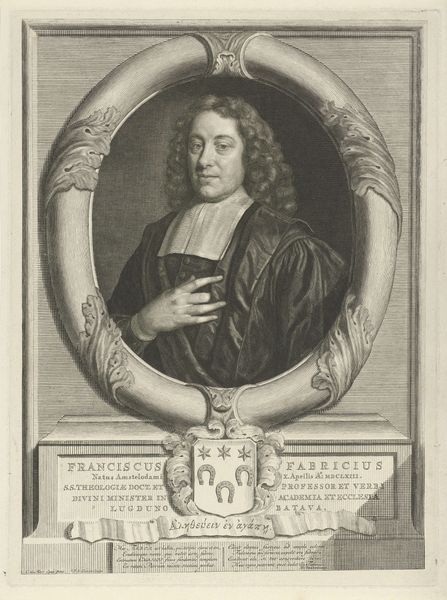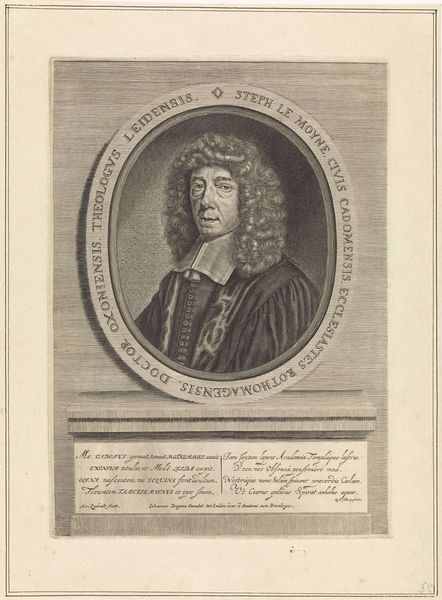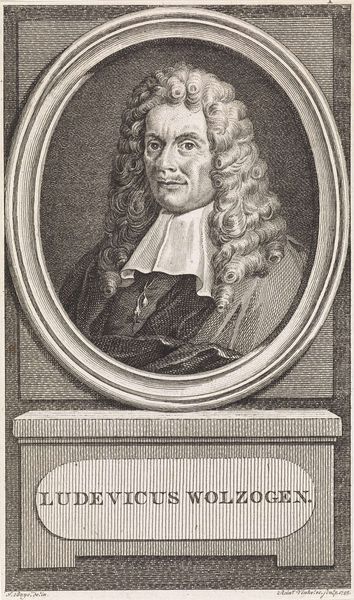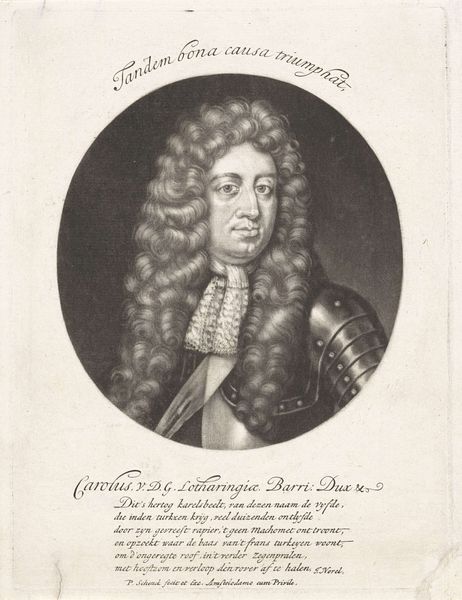
print, engraving
#
portrait
#
baroque
# print
#
old engraving style
#
academic-art
#
engraving
Dimensions: height 230 mm, width 176 mm, height 73 mm, width 179 mm
Copyright: Rijks Museum: Open Domain
Editor: Here we have a print entitled *Portret van Jacob Gronovius* from 1697 by Anthony van Zijlvelt. It's an engraving, and the detail is really incredible, especially in the subject's elaborate wig. What stands out to you about this portrait? Curator: Considering the social and academic circles Jacob Gronovius occupied, this portrait served as more than just a likeness. Engravings like this were vital tools for disseminating images of intellectuals and solidifying their public image. How does the framing of the portrait—within that oval border and atop the inscription—contribute to that effect? Editor: It feels almost like a monument or a bookplate. Like he's being presented as a figure of importance, to be remembered. Curator: Precisely. The Latin inscription, positioning him as a professor of Greek language, history, and eloquence, reinforces this idea. How does that impact our viewing of this art today? Is it something to merely glance over? Or is there an intent to pause and admire, respect? Editor: I think the inscription adds to the impression of scholarly authority, even if I can't fully translate it. It makes me think about how access to knowledge was often controlled or curated. Only the academic folks could read Latin back then. Curator: Yes, these images actively constructed the public identity of scholars and promoted intellectual culture. Considering Zijlvelt’s engraving skill and Gronovius's status, does this affect your assessment? Is it "just" a portrait, or is it an active social symbol from a time where power of representation meant influence? Editor: It’s definitely more than just a portrait now that you mention the power of image dissemination back in that time! The wig suddenly has all sorts of implications regarding the expression of stature, rank and knowledge. I now look at this engraving as more of a public statement. Curator: Exactly. It makes me wonder, how portraits like these have shaped the power dynamic between the represented elite, and the common viewer who looks upon them today.
Comments
No comments
Be the first to comment and join the conversation on the ultimate creative platform.
